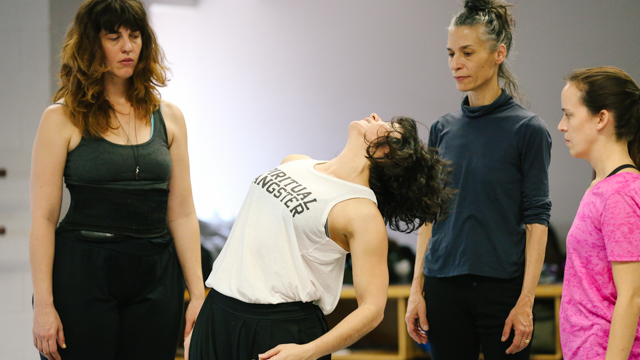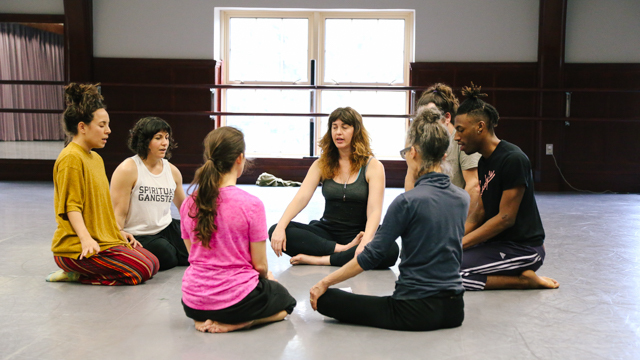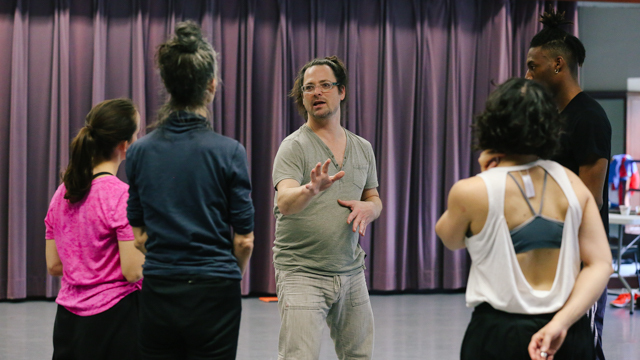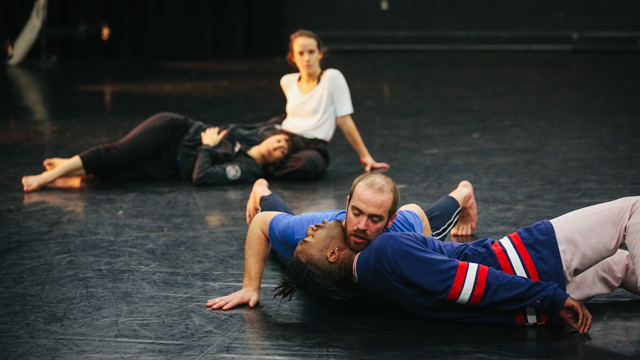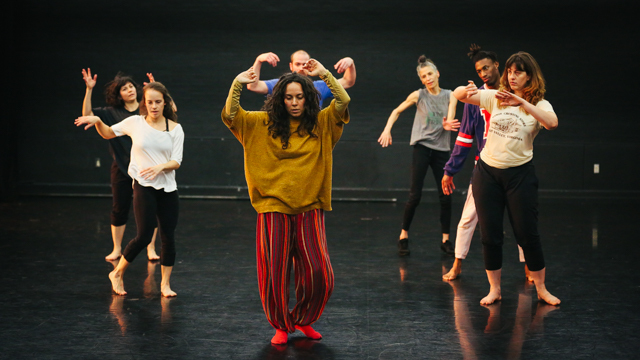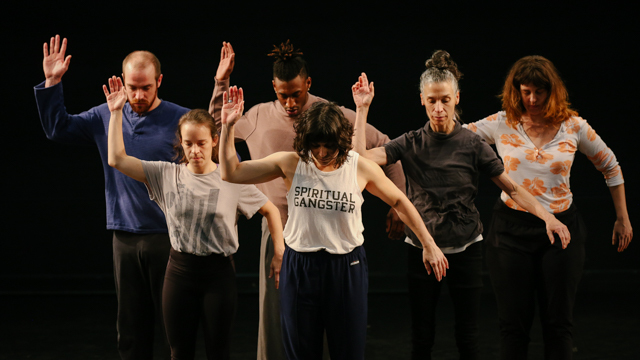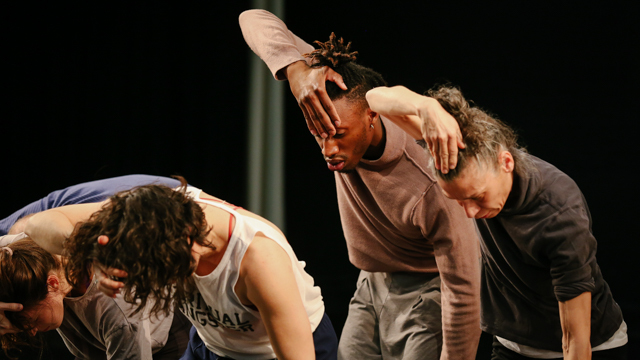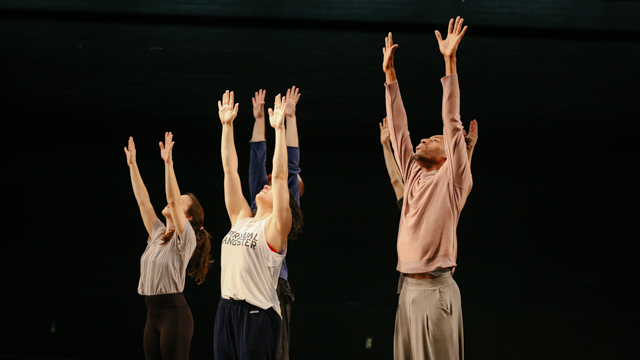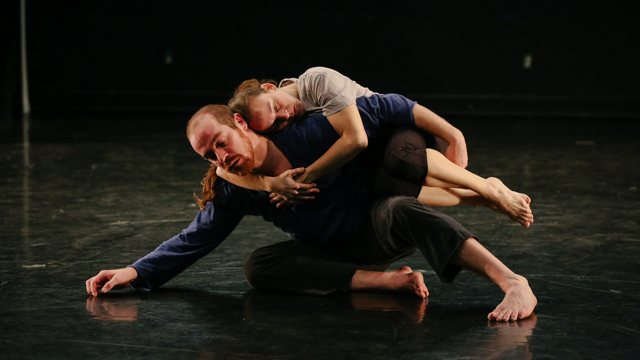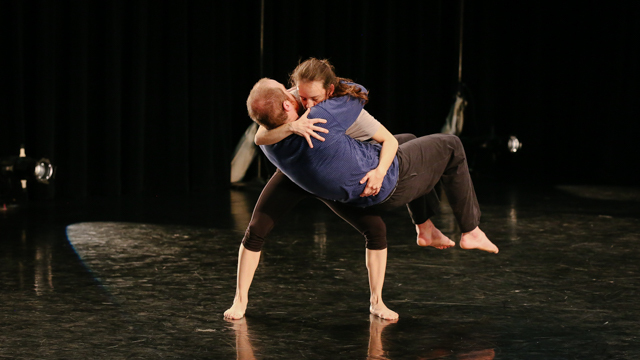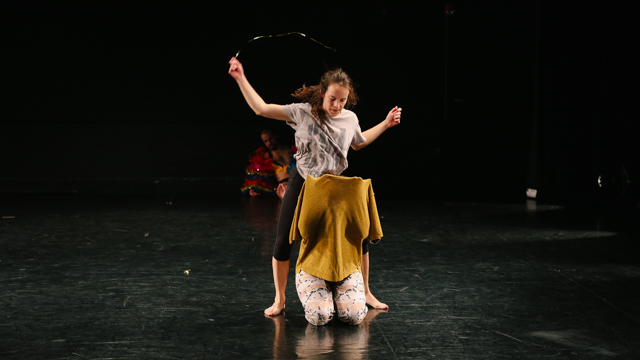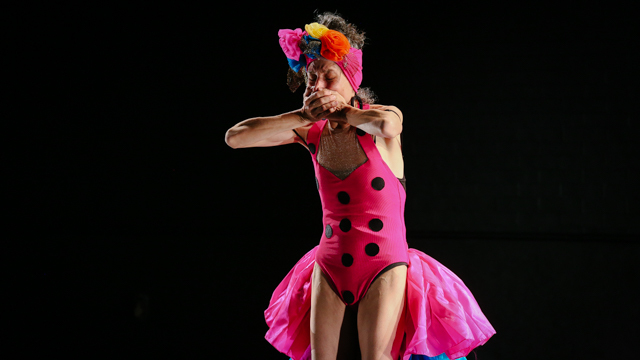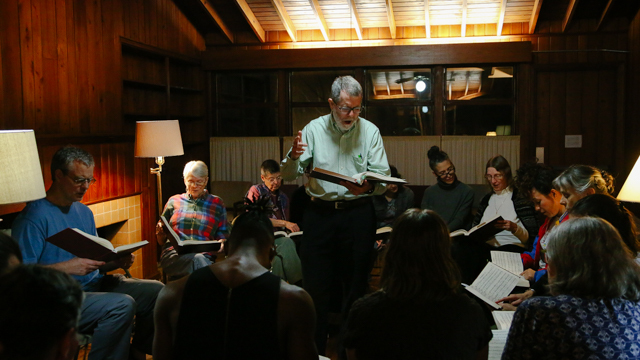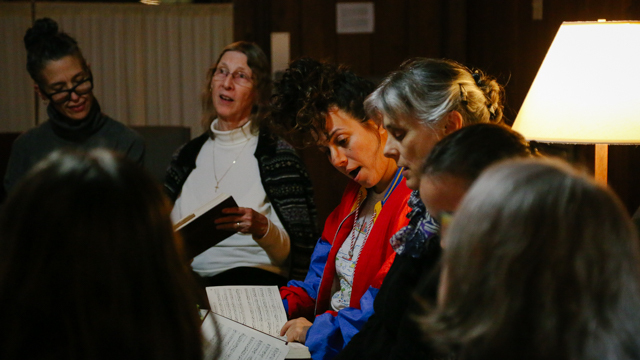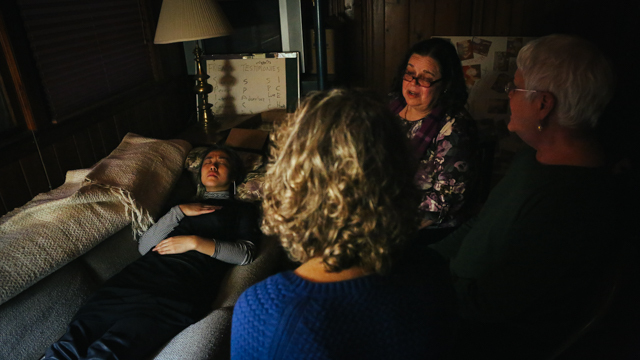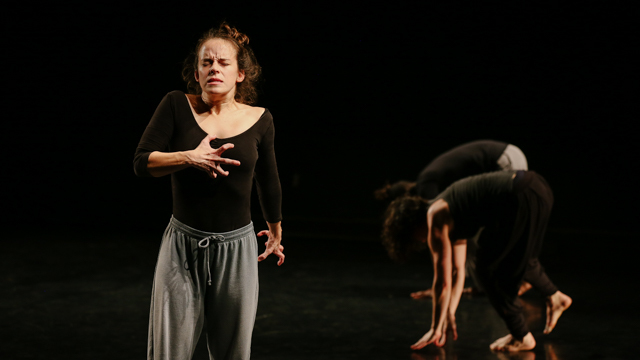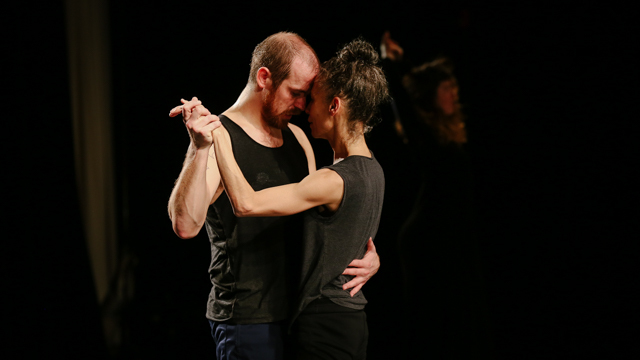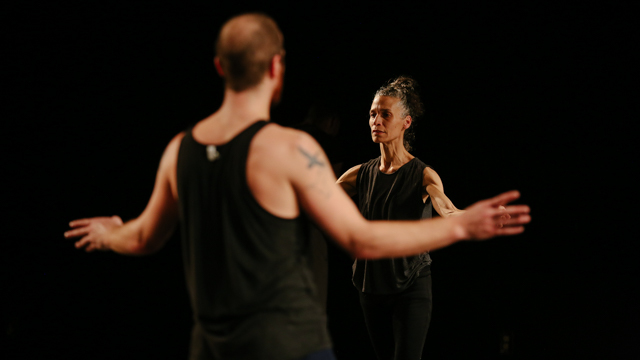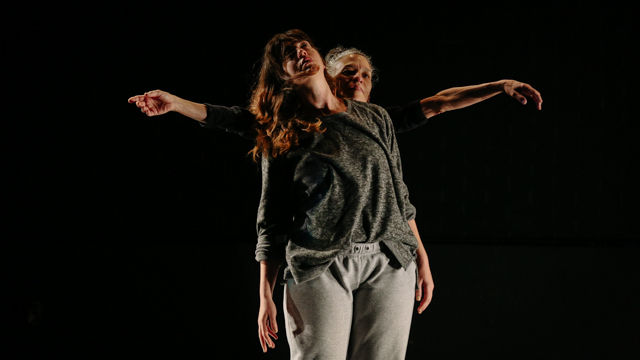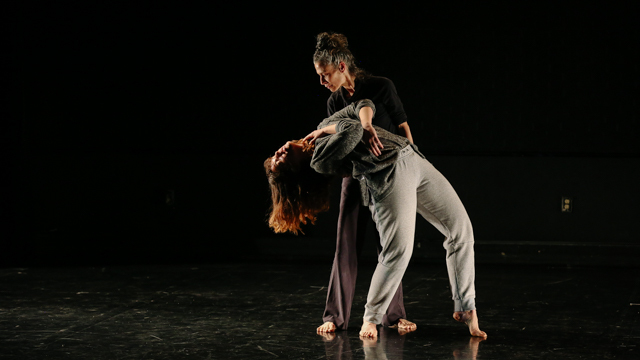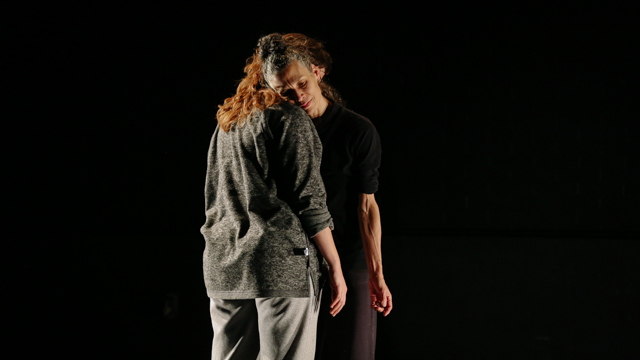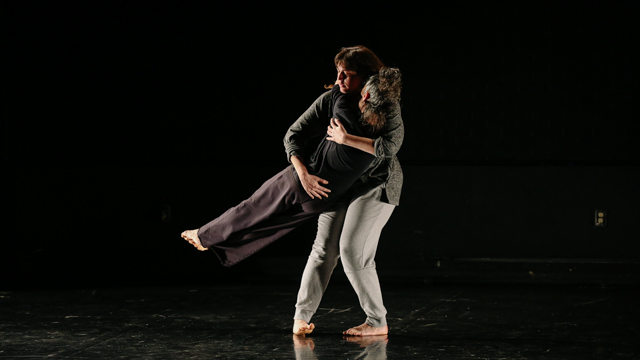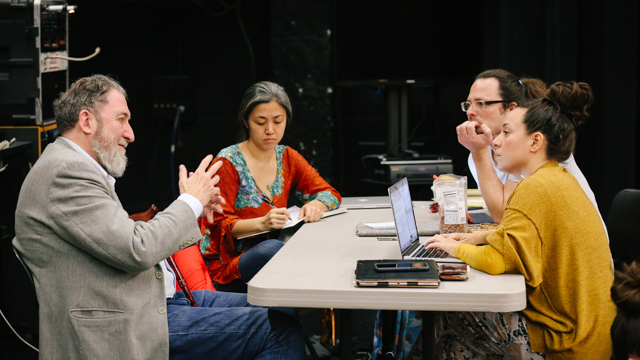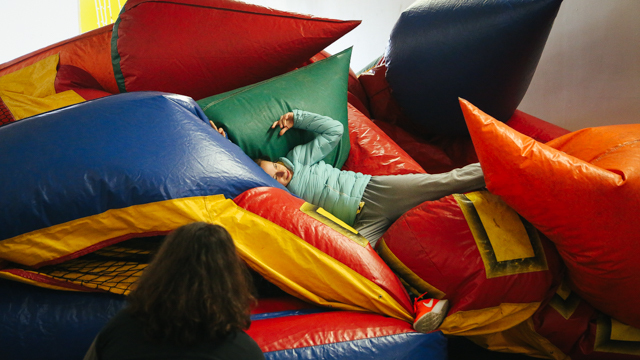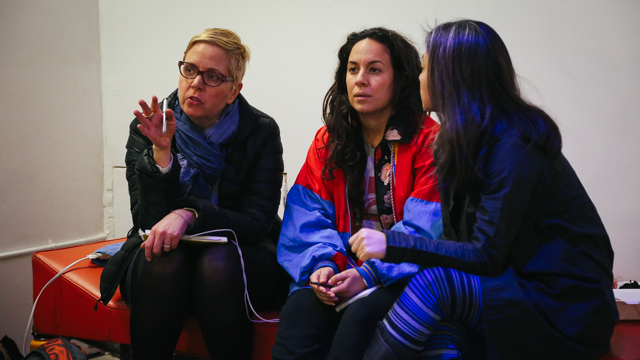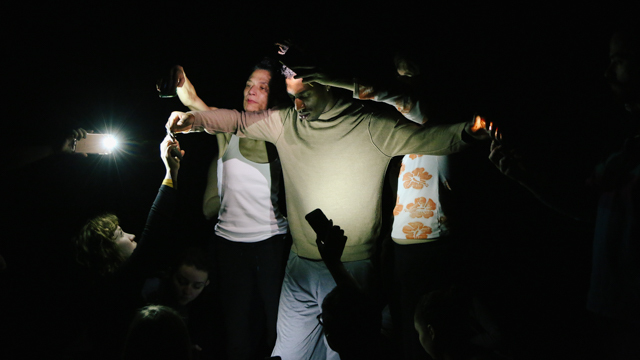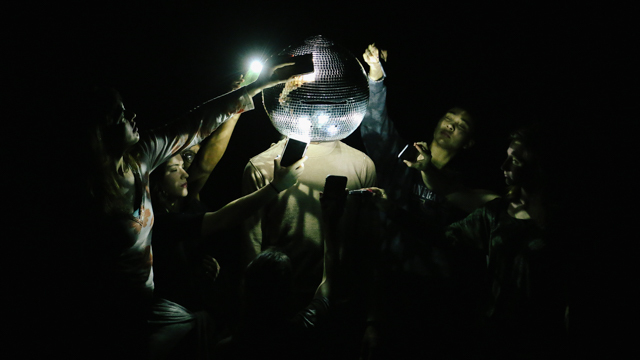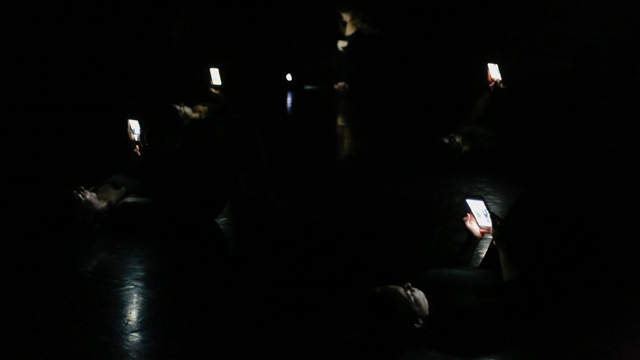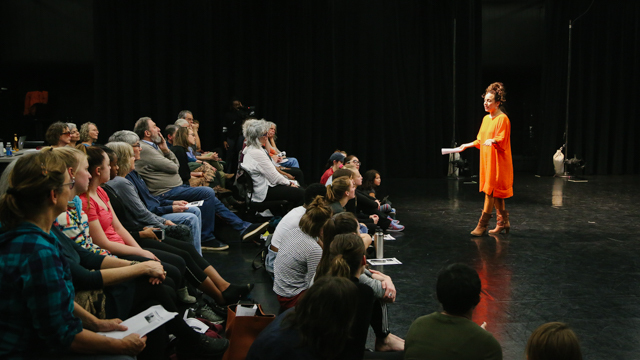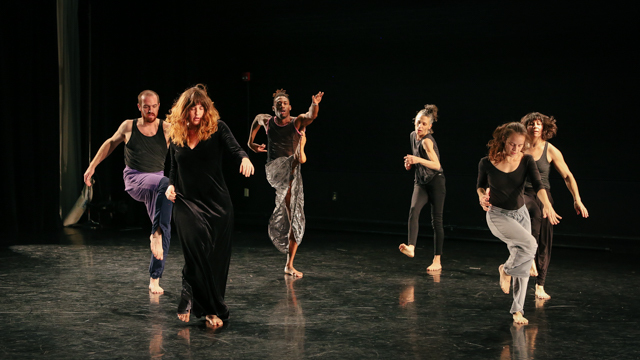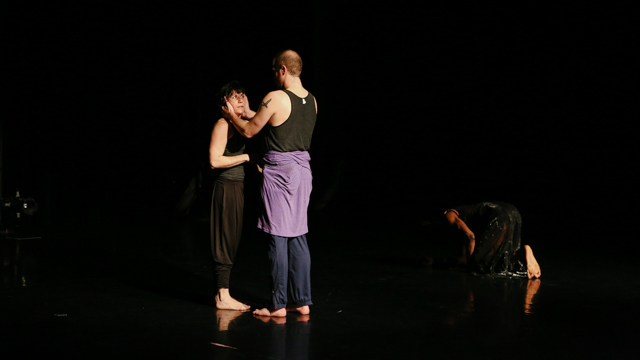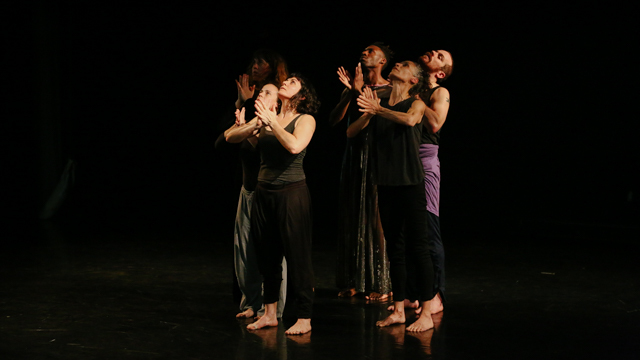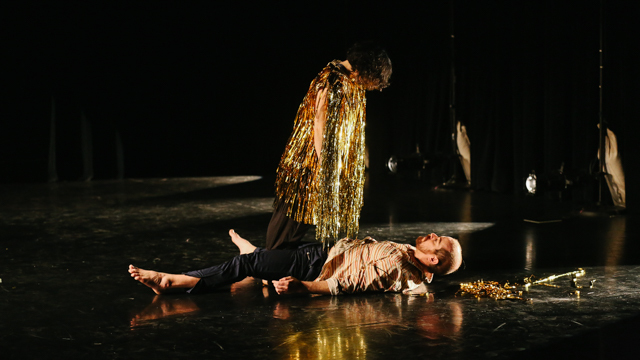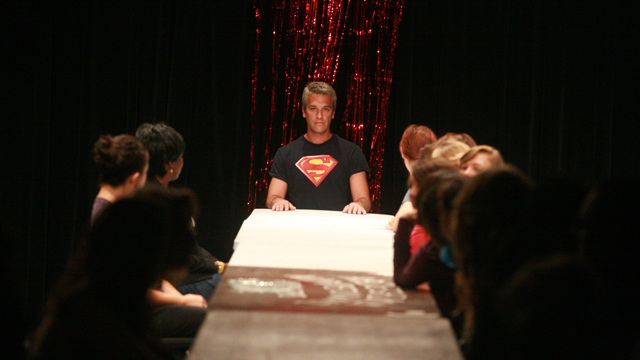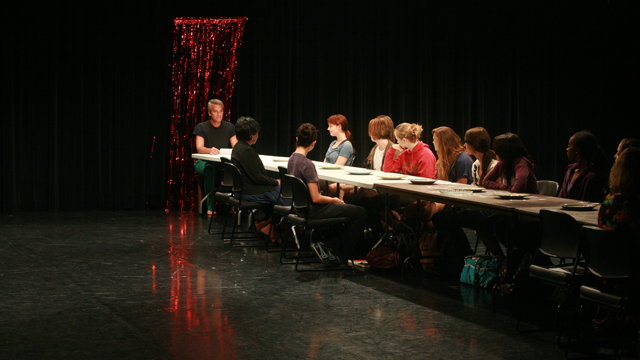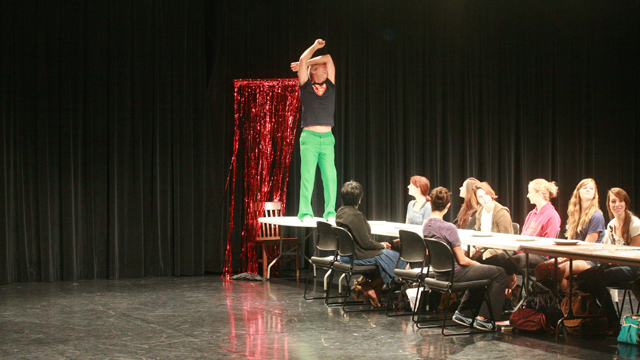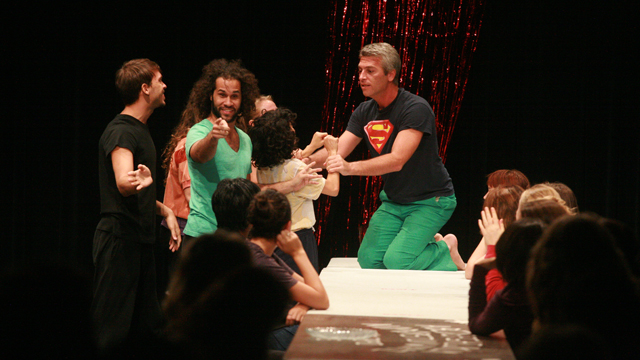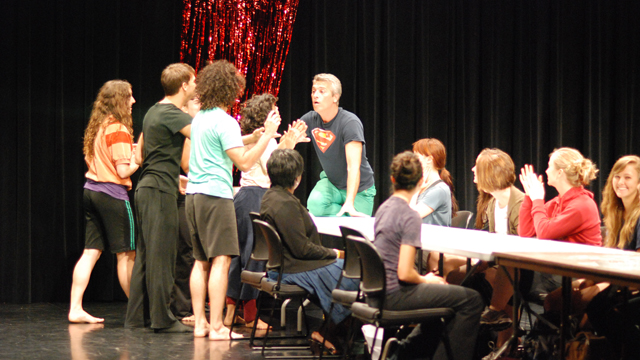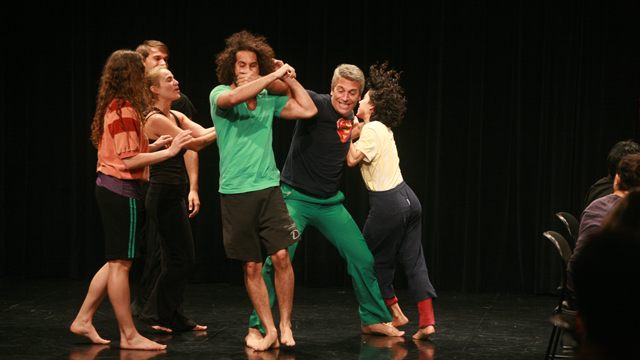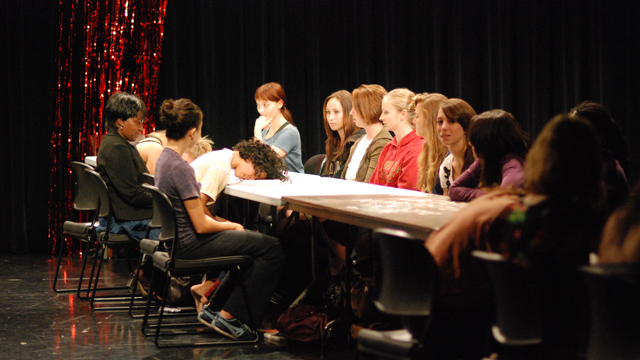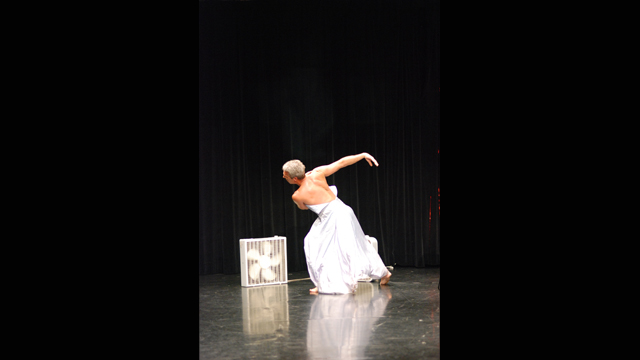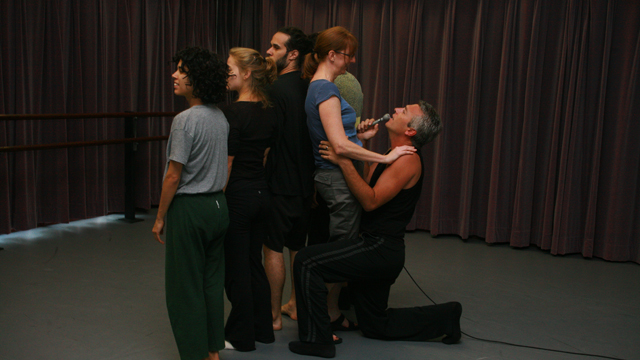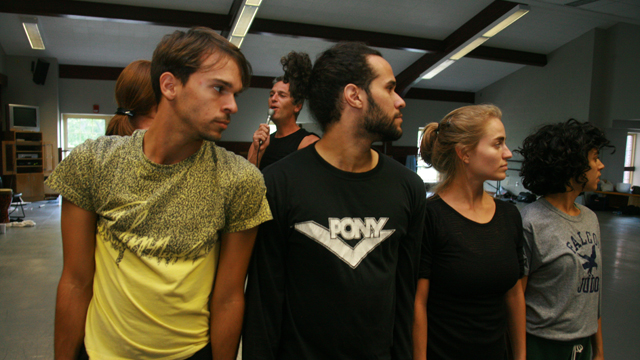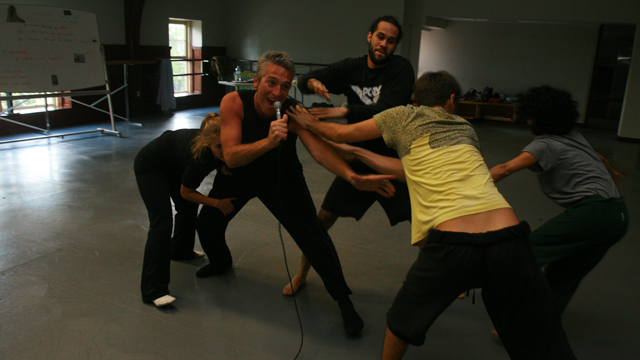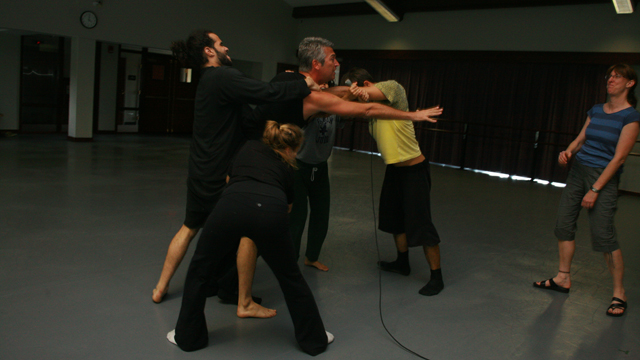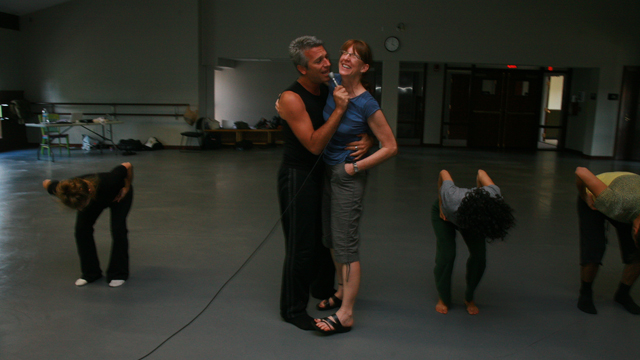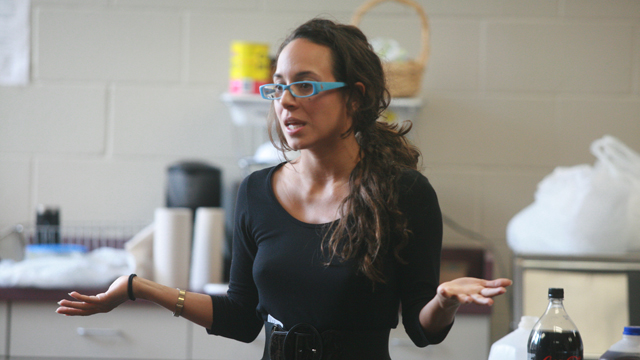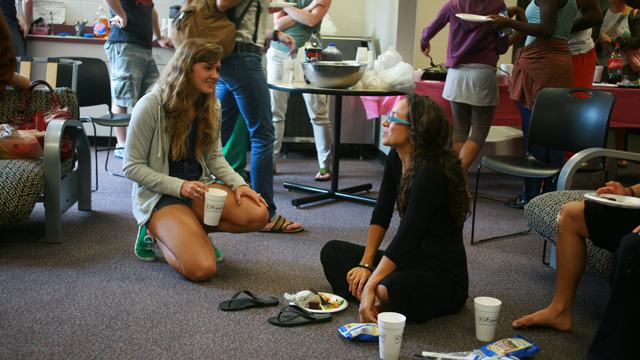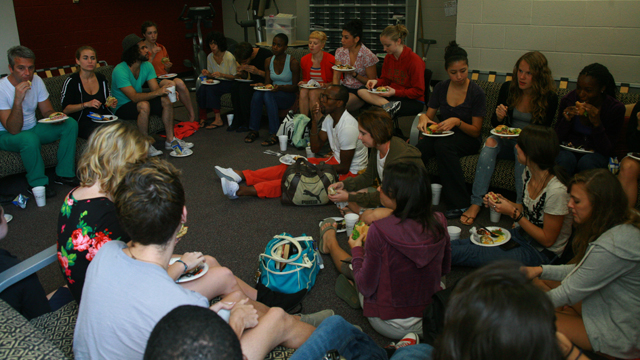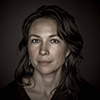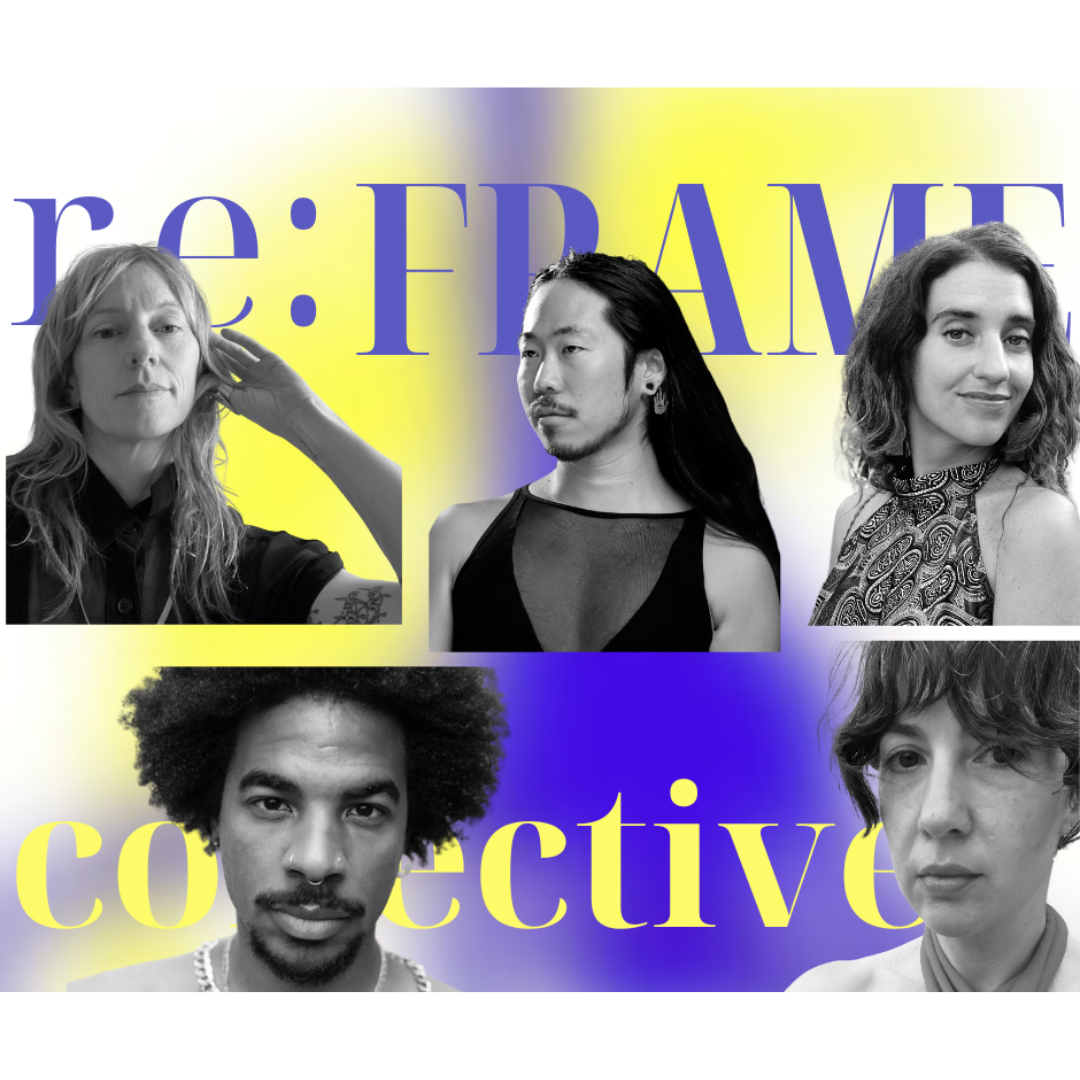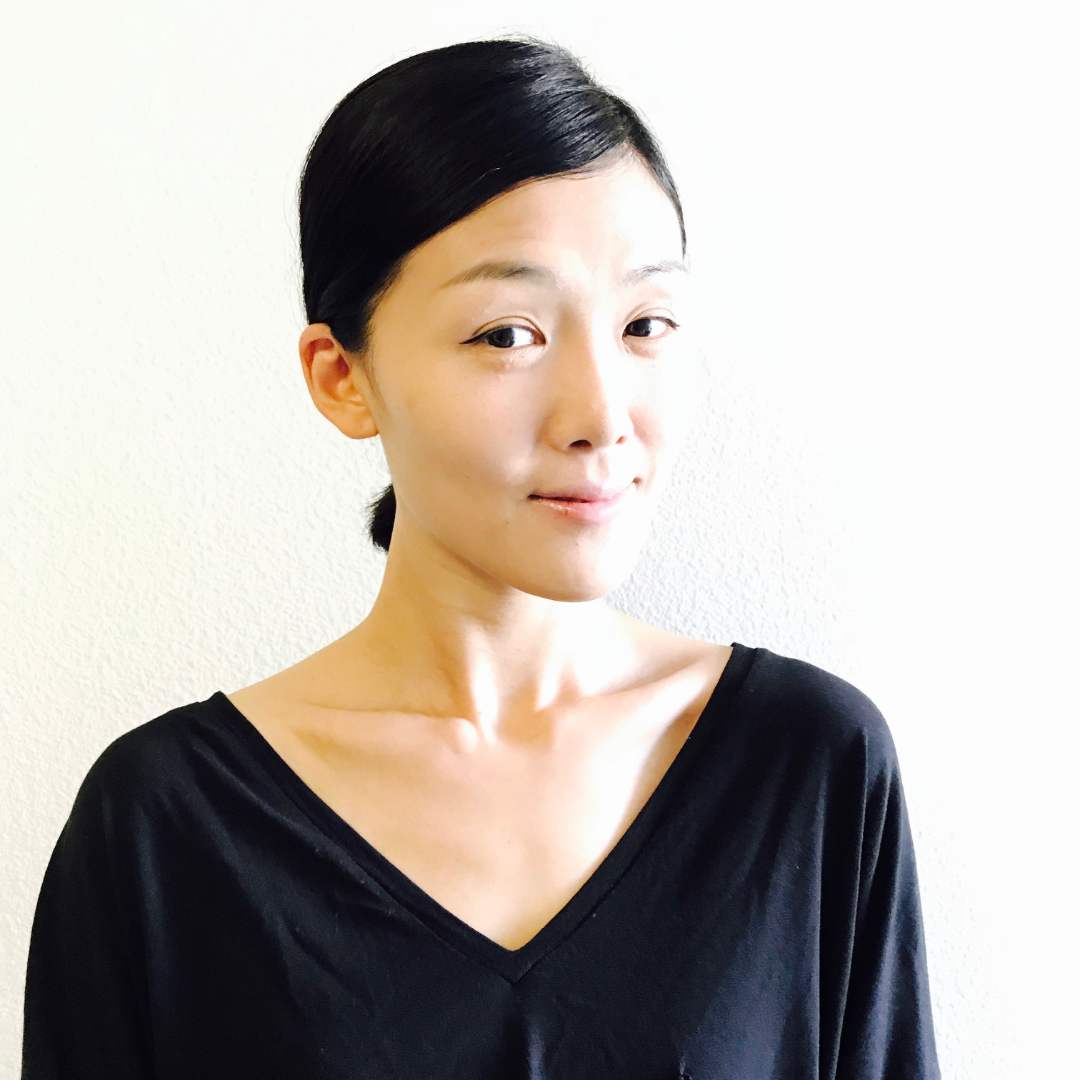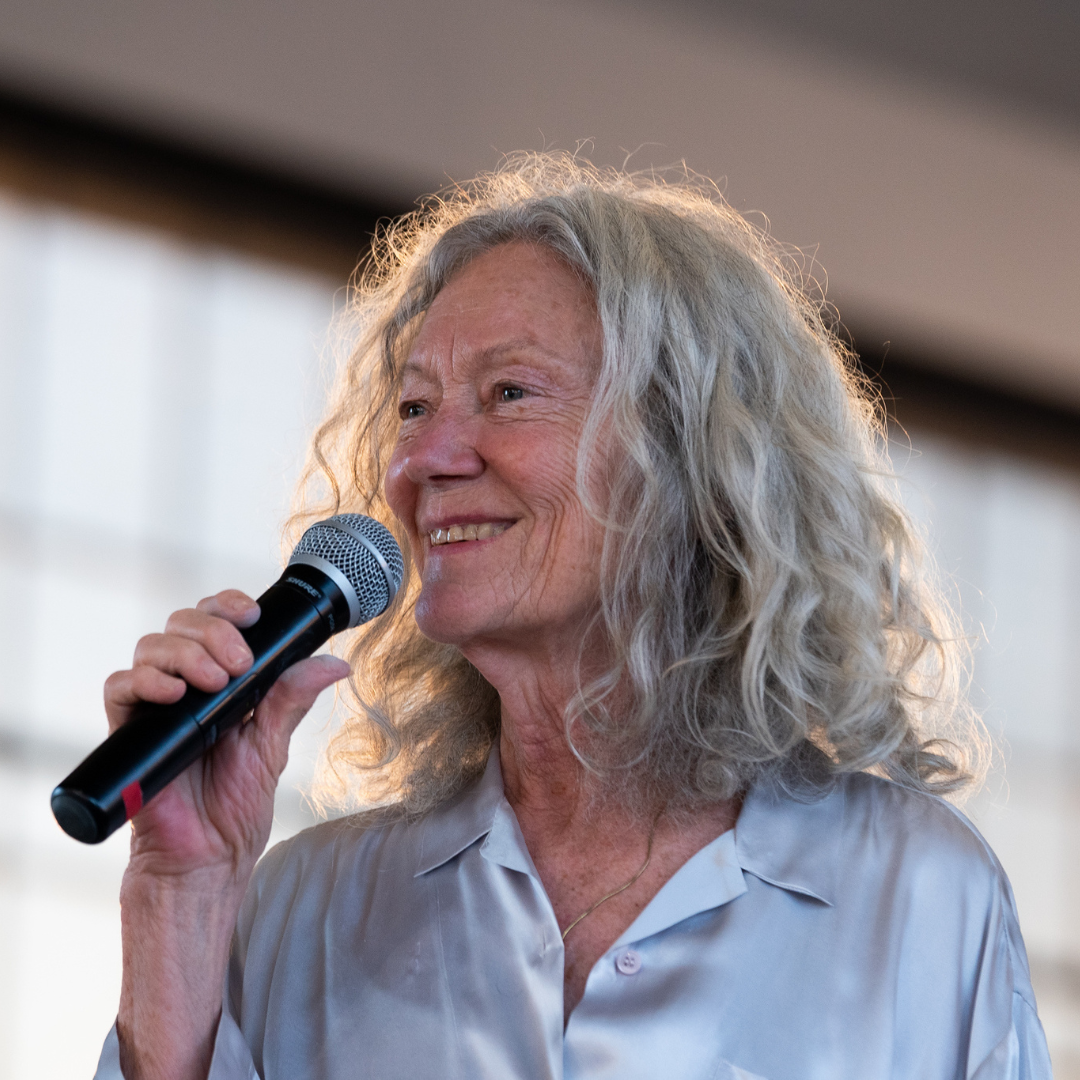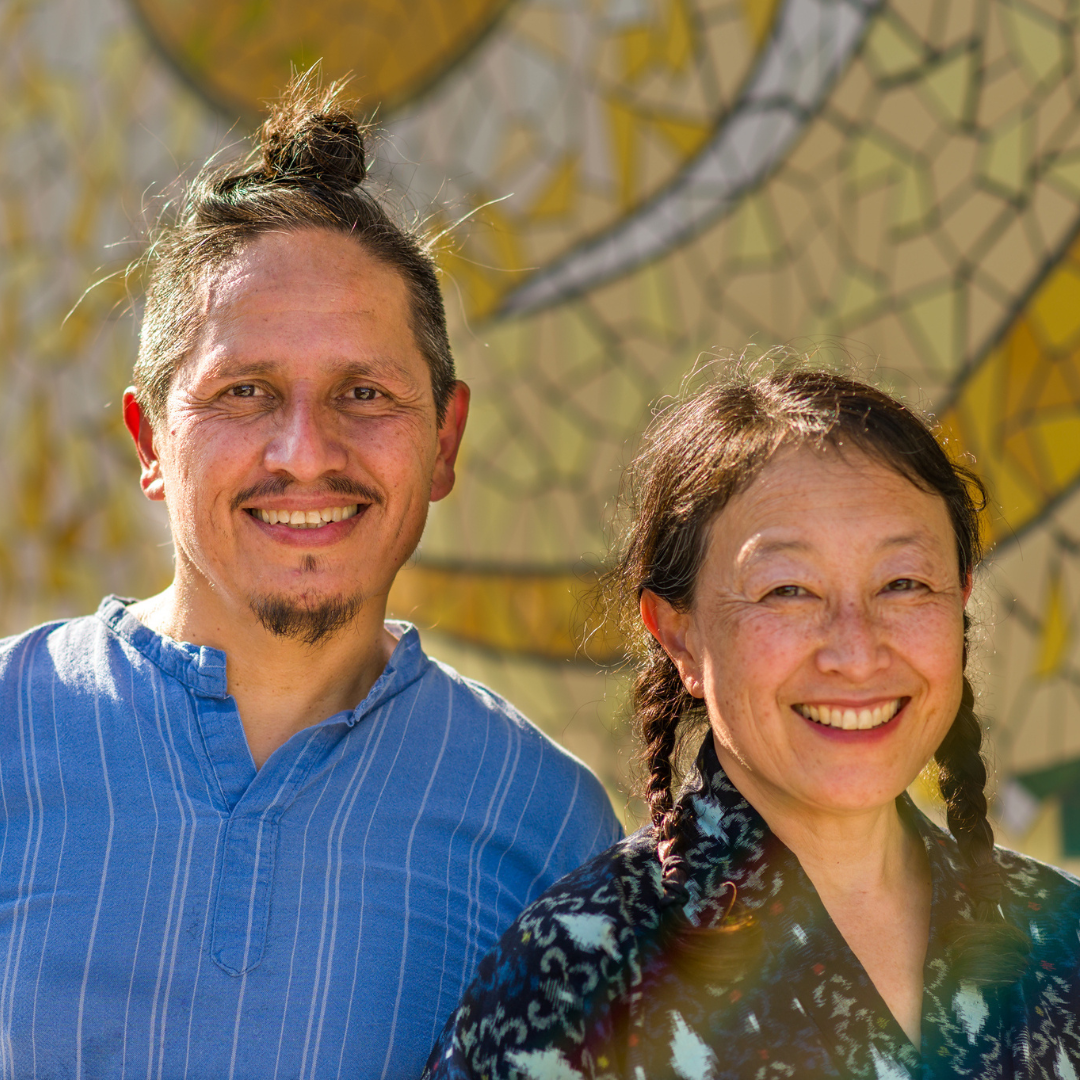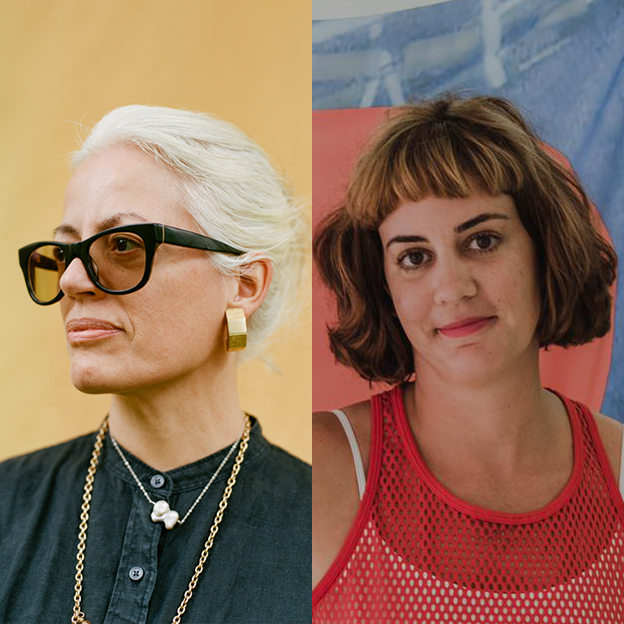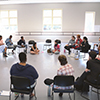Returning Choreographic Fellow | January 25 - February 8, 2018
Make Believe
Rosie Herrera returned to MANCC to develop her latest evening-length dance theater work, Make Believe, which explores magic, celebrity worship, and romantic love through the lens of ritual and religious spectacle.
Herrera grew up equally familiar with the tenets of Christianity and the Afro-Cuban “voodoo” practice of Santeria. Not only are her parents devoutly Catholic, they were also briefly connected to a religious cult. She was also tightly bonded to her Tio Juanito, a mystic whose unexpected trance-like premonitions were revered by her family. This, combined with her family’s obsession with celebrity astrologer Walter Mercado, comes together to define her unique spiritual identity rooted in a dramatic and intimate relationship with the divine. At a time when fear of otherness is at a fever pitch, and our most intimate selves are shielded behind online profiles, Herrera finds her family’s rapturous search for deliverance in God and love to be in sharp contrast, even threatening, to a regressive and judgmental piety that looms over the American cultural landscape. For Make Believe, Herrera looks at how the influence of religion during childhood impacts one's notions of romantic love later in life.
Convening her entire cast and design team as well as dramaturg David Brick, Co-Director of Headlong Dance Institute, at MANCC represents a shift in her practice toward a longer term collaboration, where set, costume, and music designers help shape the work in the studio from the very outset.
During the residency Herrera met with a variety of scholars and experts to deepen her research at the intersections of love and religion. Dr. François Dupuigrenet-Desroussilles, Professor of Religion specializing in 16th century Christianity, joined Herrera and her cast in the rehearsal studio. After viewing several vignettes the cast had been working on, Dupuigrenet-Desroussilles discussed the history and evolution of visual representation within the Christian tradition, the differences between reality and its representations, and notions of faith represented through extreme pain and ecstacy.
Trained as a classical opera singer, Herrera is also deeply interested in the physical and emotional healing potential of sound, particularly the voice. To this end, Herrera and her cast attended a local “group sing” of Sacred Harp Singers. The group provided a brief overview of their practice of shape note singing in four-part harmony, its history beginning in New England, and later its revival in the primitive rural churches of the American Southeast. Further, they shared personal stories of mourning, healing, and communitas found in the practice of singing.
Herrera’s experience with the Sacred Harp singers led her to another singing group, the local chapter of the California-based Threshold Choir, which gathers to sing songs of comfort and joy to those “at the thresholds of life.” Founded in the 1990’s by musician Kate Munger, the Threshold Choir was inspired while caring for a loved one dying of HIV/AIDs. Now, with chapters across the United States, volunteer singers come to the bedsides of hospice patients with the goal of bringing comfort and solace through shared energy and song. In preparation for an event honoring survivors of suicide, the Tallahassee Threshold Choir invited Herrera’s cast to experience their rehearsal process, taking turns as the “receivers” of song.
Herrera also used her time at MANCC to experiment with several visual design elements of the work. In a section of the work that comments on romantic life mediated through digital platforms, dancers experimented using the glow of their cell phones as theatrical lighting. FSU School of Dance students were invited to participate in this experiment, as Herrera tried the idea with an expanded cast. This sparked another idea for a potential community engagement element of the work, in which local community members are invited to join the performance.
Herrera also conducted movement experiments inside of a rented bounce house as an element of the set for the work. Herrera envisioned a bounce house blown up in real time during the performance, which required a deep understanding of the materiality and mechanics of the bounce house, and what can safely be accomplished in performance.
The residency culminated in an informal work-in-progress showing on Monday, February 5th, 6pm, in the Montgomery Hall Black Box Studio. The showing was open to the public, and attended by members of both the Sacred Harp and the Threshold Choir, Dr. François Dupuigrent-Desroussilles, students and faculty of the School of Dance, Pam Green of PGM Artist Management, Laurie Uprichard, Senior Curator of Performing Arts at the Contemporary Art Center (CAC), New Orleans, and William Bowling, Performing Arts Manager, CAC.
Make Believe premiered in July 2018 at the American Dance Festival in Durham, North Carolina.

